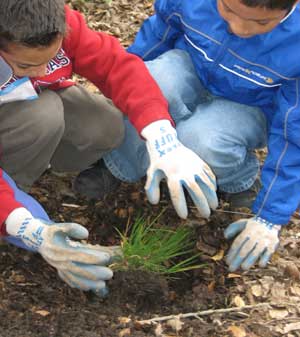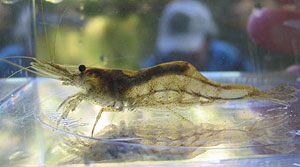 When you’re feeling gloomy about the state of the planet and all the environmental challenges we face, there’s no better medicine than to spend a day outside with kids, planting native plants.
When you’re feeling gloomy about the state of the planet and all the environmental challenges we face, there’s no better medicine than to spend a day outside with kids, planting native plants.
That’s what I did two weeks ago, when I tagged along with our Students and Teachers Restoring a Watershed (STRAW) Project staff and a class of second graders as they worked to restore a stretch of Matanzas Creek in Santa Rosa. The kids were removing invasive vinca and English ivy and planting California rose, honeysuckle, snowberry, Dutchman’s pipevine, and other native plants.
It was a great pick-me-up. For one thing, it is always fun to be reminded of that long-distant, magical time in your life when holding a live worm in your hand was the genuine highlight of your day. But it is also inspiring to witness the “can-do” attitude of the students.
The wonderful thing about kids is they are still young enough and wise enough to know that their actions make a difference. In fact, the STRAW Project itself was started 15 years ago by a class of fourth graders at Brookside School in San Anselmo. The students had seen a film on endangered species and decided they wanted to do something to help. They learned of a local endangered species, the California freshwater shrimp (Syncaris pacifica), found only in a handful of Bay Area creeks.
 California freshwater shrimp (Syncaris pacifica)The students “adopted” the shrimp, researching and publicizing its plight. Next they befriended a rancher, Paul Martin, who invited them onto his property to restore a creek site that had been home to the shrimp. Word spread and now, 15 years and more than 10,000 students later, close to 60,000 linear feet of creek bank has been restored.
California freshwater shrimp (Syncaris pacifica)The students “adopted” the shrimp, researching and publicizing its plight. Next they befriended a rancher, Paul Martin, who invited them onto his property to restore a creek site that had been home to the shrimp. Word spread and now, 15 years and more than 10,000 students later, close to 60,000 linear feet of creek bank has been restored.
